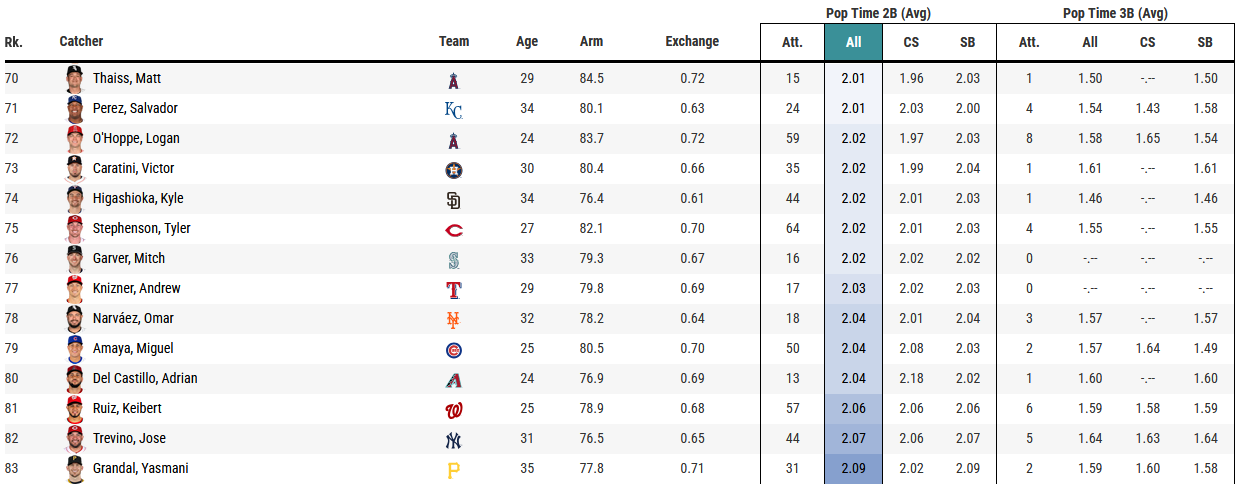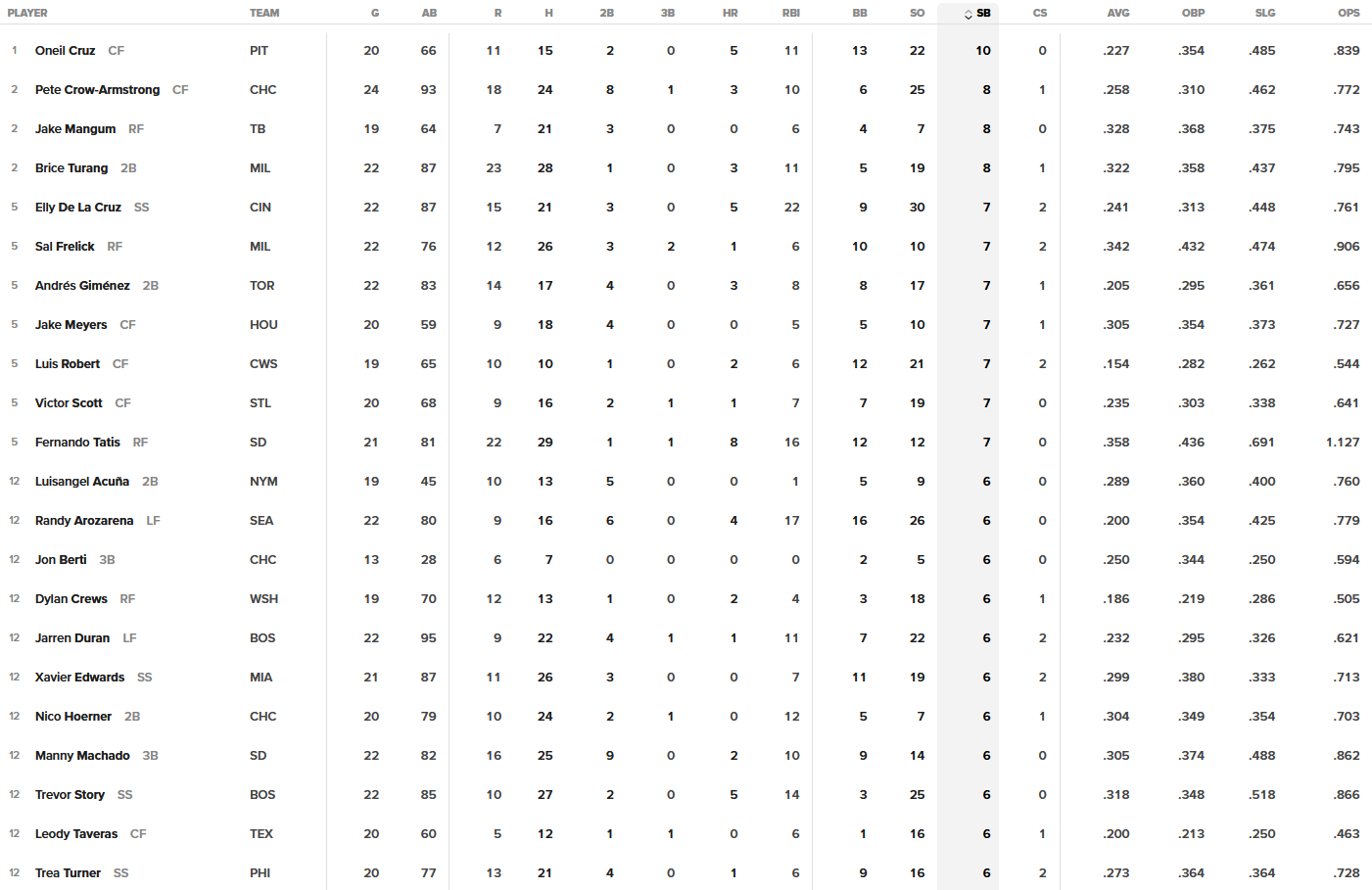Welcome back, stolen base aficionados. The calendar is about to turn to May, and the fantasy teams are shaking out into contenders and pretenders. It’s still silly season though, where big swings can happen. Today we are going to discuss the classic 2002 Tom Hanks and Leonardo DiCaprio film Catch Me If You Can. The Steven Spielberg biographical crime dramedy also features a star-studded supporting cast with Amy Adams, Christopher Walken, Martin Sheen, Nathalie Baye, and James Brolin.

Well, if you have made it this far I highly suggest checking out the flick, but in reality we are going to take a deep dive into what makes a good catcher when it comes to limiting base runners, and which catchers we should target to pick up stolen bases against when making our Speed Dials.
So what makes a good catcher when it comes to throwing out base runners? First off, a pitcher that limits traffic, but that’s a conversation for a different article. Another factor is again on the pitcher, and that’s the runner’s average distance from second base when the catcher receives the ball. The bigger the jump, the harder a runner is to throw out.
The two main components the catcher can control are arm strength and exchange time. These stats are rolled up into one seamless number called Pop Time. So, what is the exact definition of Pop Time? The time elapsed from the moment the pitch hits the catcher’s mitt to the moment the intended fielder is projected to receive his throw at the center of the base.
Historically, an average Pop Time is 2.00 seconds. As catchers have been working on this over time, they have gotten quicker, however. Of the 83 qualified catchers since the start of 2024, only 19 of them have a Pop Time above 2.00 seconds. On the flip side, only 10 catchers have an average pop time of under 1.90 seconds. There’s a big story to tell, however, in those tenth-of-a-second differences in Pop Time. For instance, a runner who is 56 feet from second, facing a catcher with a Pop Time of 1.90 second,s gets thrown out on average 38% of the time. That same runner facing a catcher with a Pop Time of 1.98 seconds only gets thrown out 25% of the time.
So, who are the best and worst at throwing guys out? Let’s take a look at the rankings. These are compiled by the guys over at Baseball Savant.
Here are the good catchers that actually throw guys out. I’m not stealing against Patrick Bailey anytime soon.

And the guys we target to run against.

The rest of the metrics are put in, such as how big a lead a runner has and his sprint speed, and we get actual estimated CS metrics. You’ll see some of the same names on both charts. Here are the catchers who cut runners down.

And our Speed dial targets are now below:

Keibert Ruiz is my favorite target of the bunch. Since 2023, opposing teams have tried to run on him 199 times, and he’s only thrown out the base stealer 12 total times. You’ll see me looking for Nationals pitchers to run against in my speed dials all constantly.
Speaking of Speed Dials, we went 0 for 4 last week. Which is going to happen when you’re making specific stolen base calls for specific days. We hit at just over 20% for the season last year, but if you’d streamed every one of them, you would have ended the season with 18 more stolen bases on your squad.
This week however, I am going to let you do your own Speed Dial research as I am traveling and don’t quite have time to do it for you this week. Look at these catcher leaderboards, look at pitchers SB/IP ratios, and look at sprint speeds and OBP vs opposing pitchers, and come up with some of your own. Finally, below is the weekly stolen base leaderboard to help you out as well. As always, you can hit me up here with any questions or on Twitter @TheGreatKnoche. Catch y’all next week!



